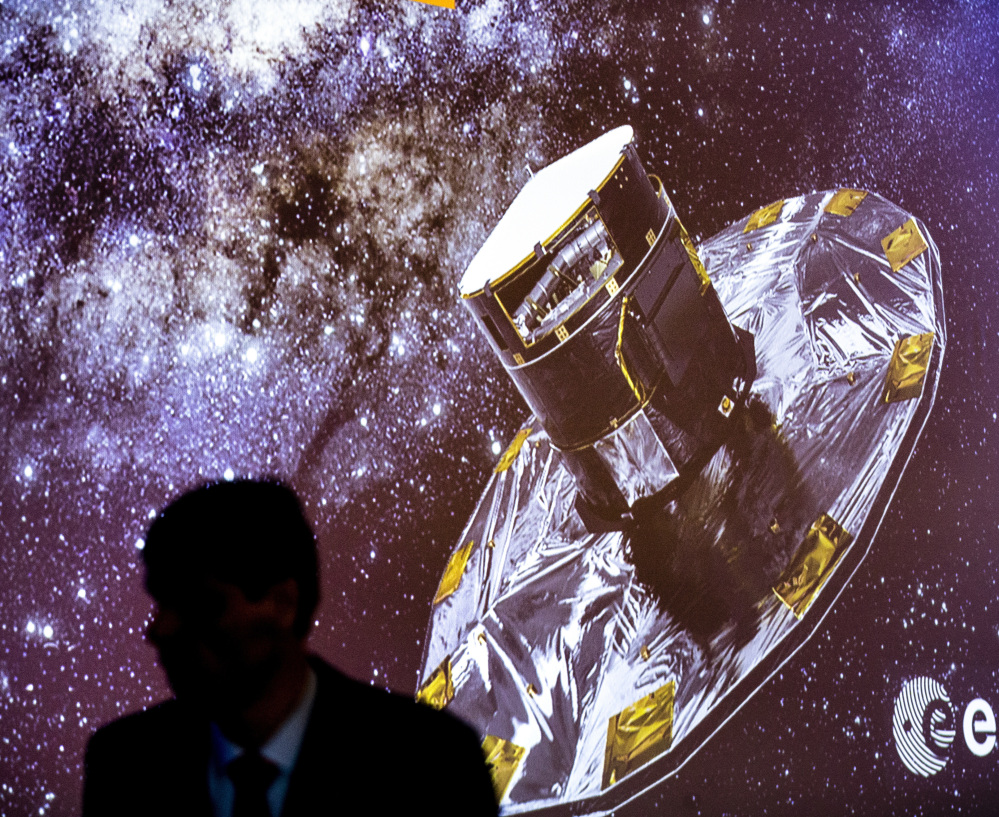MADRID — If space is the final frontier, it will help to have an accurate map, and the European Space Agency said Wednesday its mission to chart more than 1 billion stars in the Milky Way is on track for completion in a year’s time.
The agency released the first data from its ongoing effort, called the Gaia Mission, to draw the biggest and most precise 3-D map of our galaxy.
Mission manager Fred Jansen told a news conference in Madrid that the project has already collected some 500 billion measurements and he is “extremely happy” with the precision of the data. It is being distributed among scientists for analysis.
At the heart of the five-year mission is the 33-foot-wide Gaia spacecraft, which resembles a barrel sitting on a silver saucer. It carries two telescopes and is orbiting slowly around the sun.
Anthony Brown, head of the scientific consortium processing Gaia data, said the highly precise calculations represent “a revolution” in astrophysics. The high-resolution methods have already helped identify some 400 million new stars.
The full atlas of 1 billion stars – representing about 1 percent of the stars in the Milky Way – is set to be released near the end of 2017.
The agency says the “huge stellar census” will help resolve mysteries about the origin and evolution of the galaxy.
Cataloging the galaxy is a major technological challenge, and the agency says Gaia’s measuring abilities are in some cases comparable to measuring the diameter of a human hair from 600 miles away.
“The beautiful map we are publishing today shows the density of stars measured by Gaia across the entire sky, and confirms that it collected superb data during its first year of operations,” said Timo Prusti, Gaia project scientist at ESA.
Send questions/comments to the editors.



Success. Please wait for the page to reload. If the page does not reload within 5 seconds, please refresh the page.
Enter your email and password to access comments.
Hi, to comment on stories you must . This profile is in addition to your subscription and website login.
Already have a commenting profile? .
Invalid username/password.
Please check your email to confirm and complete your registration.
Only subscribers are eligible to post comments. Please subscribe or login first for digital access. Here’s why.
Use the form below to reset your password. When you've submitted your account email, we will send an email with a reset code.